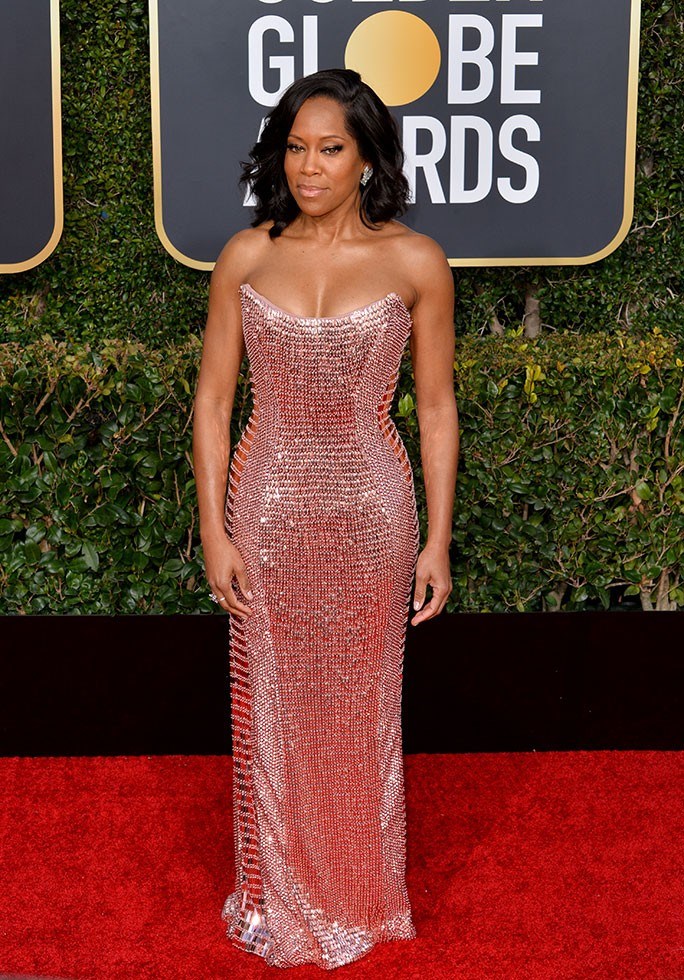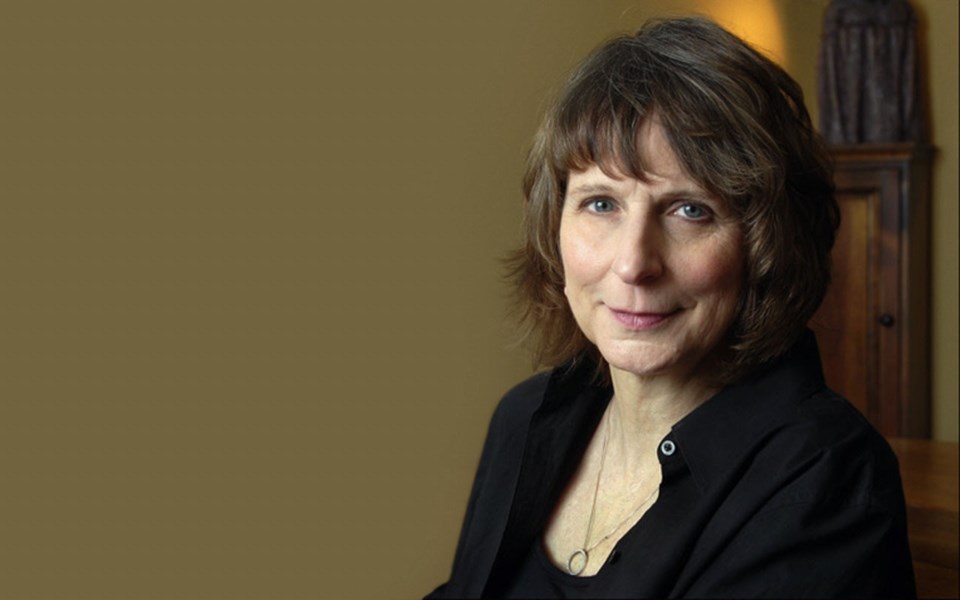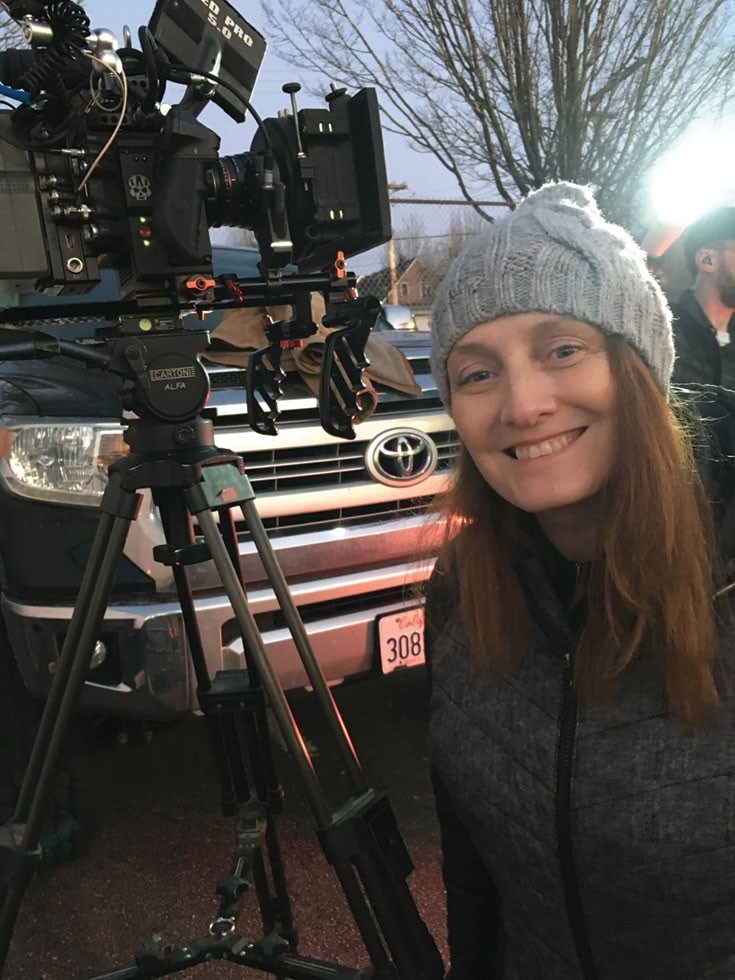
As we celebrate International Women's Day on March 8, the spotlight is on more than just women's achievements—the aim of this year's event is to tenaciously and unapologetically challenge bias. The International Women's Day theme for 2019 is #BalanceforBetter, a call-to-action for driving gender balance across the world.
Progress has been made. Open dialogue, heated debates and unified protests send out urgent calls to continue shifting our social landscape. There is, of course, still massive change needed and we can either turn our backs, or come together to fight it because this battle must be fought by everyone. As writer and activist Gloria Steinem once said: "The truth will set you free, but first it will piss you off."
Outrage has indeed been festering in the entertainment industry over the last couple years with the explosion of the Me Too and Time's Up movements. Although the genesis of these revolutions may have happened amidst a consistent trickle of shocking stories of abuse and a political arena that felt like a huge step backwards, the narrative of gender inequality is not new.
But in this era, perhaps the most optimistic sign is a unified front committed to combating sexual misconduct and increasing pay equity across industries. And those signs are everywhere.

A rallying cry
At January's Golden Globes ceremony, actress Regina King used her platform at the podium to issue a rallying cry for gender parity. Accepting the award for Best Supporting Actress for her performance in If Beale Street Could Talk, she said: "I'm going to use my platform right now to say: In the next two years, everything I produce—I am making a vow and it's going to be tough—I will make sure everything I produce is 50-per-cent women."
On this side of the border, the rallying cry is reverberating in Whistler as well. The Whistler Film Festival has made gender parity a key focus, and executive director Shauna Hardy Mishaw has worked tirelessly to bring innovative events and programs to showcase this very real issue in the industry.
The catalyst for the film festival's drive to close the gender gap stemmed from a notable increase in female-directed films and female participants in their programs at past events. "This issue of gender imbalance, both on screens and behind the scenes, has been going on forever and we felt it needed to be formally addressed," Hardy Mishaw says.
[pullquote-1]
Fuelled by a lofty mandate of "50/50 by 2020" set by the industry's major government agencies: Telefilm Canada, The National Film Board of Canada (NFB) and The Canadian Media Fund, the Whistler Film Festival started to explore how to forge forward and hold these organizations accountable to achieve equal representation. This was before the Me Too and Time's Up movements had sprung to life—but our local film fest is well-known as a driver of innovation in the Canadian film landscape.
Founded in 2001, the festival's intention was to showcase independent film, put Whistler on the map as a cultural destination and to promote British Columbia's burgeoning film industry. Today, the organization is known as a well-respected event on the international film festival circuit, with more than 3,000 unique attendees to last year's event, a nine-per-cent increase from 2017. And if last December's festival is any indication, the event now serves as change-maker in the fight for gender equality.
At the 2018 festival, 21 feature films and 18 short films were directed or co-directed by women or non-binary individuals. That made up 45 per cent of last year's programming, the highest percentage for the festival to date.
The launch of the Women on Top Series further augmented its programming mandate. The series aims to inspire women and men in an environment that promotes networking, learning, and growth around the issues of gender equity and cultural diversity in media, both on the big screen and behind the camera. The success of 2016's inaugural Women on Top event inspired Hardy Mishaw to investigate ways to expand its impact, which, consequently, led her to the Geena Davis Institute on Gender in Media.
Founded in 2004 by Academy-Award-winning actor and advocate Geena Davis, star of such films as Thelma & Louise and A League of Their Own, the institute is the only research-based organization working within the media and entertainment industry to engage, educate, and influence content creators, marketers and audiences about the importance of eliminating unconscious bias, highlighting gender balance and challenging stereotypes.
Several years ago, Davis noticed severe gender disparity in children's media. Women and girls make up 51 per cent of the population in the 21st century, but entertainment media severely lacks female representation onscreen by a ratio of approximately three to one. Although the gender gap was obvious onscreen, the industry was resistant because of a lack of research. To counteract the complacency, Davis pioneered studies and eventually partnered with Google to develop The Geena Davis Inclusion Quotient, a revolutionary media measurement tool that pushes the boundaries of how the imbalance of the representation of specific demographics and stereotypes in media are identified, including screen and speaking time.
Hardy Mishaw recognized The Geena Davis Institute as a thought leader on gender in media, its groundbreaking expertise prompting significant change in messaging throughout the industry. She set the stage to bring Davis to British Columbia last June for a follow up Women on Top event that honoured her journey as a passionate advocate to create systemic change in entertainment media content creation.
Building on the success of that event, a second Women on Top Series brought leaders from every major organization in Canada's film industry to the 2018 Whistler Film Festival. The keynote speaker, Madeline Di Nonno, CEO of the Geena Davis Institute, captivated a sold-out audience with a powerful talk on why equal representation of women onscreen matters.

Large steps
As a Whistler Film Festival Board Member, Sue Brouse contends that the festival is not only a jewel in Whistler's art and cultural scene, but a leading innovator affecting change for gender disparity issues—even before several high-profile sexual assault scandals emerged in the entertainment industry.
Coming from Brouse, this is a ringing endorsement as she, herself, is perceived as a trailblazer that has played a key role in the march for gender equality. In the 1970s and '80s, she had a career in film production and is now director of member services, communications and community relations at the Union of BC Performers (UBCP/ACTRA), the second largest and fastest growing ACTRA Branch.
With the Me Too and Time's Up movements exploding on the scene, the latter role at UBCP/ACTRA landed her firmly in the eye of the storm.
"One good thing that came out of that crisis was an awareness that the systemic problems that exist in this industry—and in many other industries—are because there is a lack of gender balance," Brouse says. She postulates that historically, the decision-makers and hiring roles were first provided to men, thereby creating power structures that led to systemic bias and inequality.
Indeed, the crisis galvanized the fight for rapid change. "It shone a light on why that fight for equality shouldn't just be in incremental inches, and that we need to take large steps, because the time to fix this is now and it starts with us—in this industry," reflects Brouse.
Like Brouse, Sharon McGowan started her film career in the 1970s. She is a documentary filmmaker, feature film producer and teaches film production at the University of British Columbia.
McGowan recalls rampant sexism in the film industry when she was coming up. "I can say with all confidence that it was very gendered in terms of what women were allowed to do, the funding they were able to access and the roles they were able to do on sets," she remembers. "There were very few women in leadership roles and creative jobs. And although there were more women in the industry in the 1980s and '90s, they generally ended up in lower-level decision-making roles and didn't receive anywhere near the equity of funding that the male-led projects did."
She uses the National Film Board as an example. "In the early years, probably 95 per cent of their films were directed by men and 100 per cent were shot by male cinematographers. Although there were a few women editors, it was pretty much a closed shop."
Witnessing this widespread discrimination inspired McGowan to get involved and strive for change. As a founding director of Women in Film and Television Vancouver (WIFTV) and currently the co-chair of the Advocacy Committee, she led a charge six years ago to aggressively lobby the NFB on the topic of equity. The NFB has actually been ahead of the curve on these issues and, in fact, was the first national funding organization in this country to make the commitment to 50/50 by 2020. Further, the NFB made international news when it committed to devoting half of its projects, as well as half of its production budget, to female filmmakers. Since then, the organization has expanded that to other realms, such as cinematographers, editors and other roles.
Even so, the numbers are still disappointing today. According to research done by The Geena Davis Institute, the number of females behind the camera still lags far behind their male contemporaries and women in the industry remain at a distinct disadvantage. In fact, only seven per cent of directors, 13 per cent of writers, and 20 per cent of producers are female. Sadly, men outnumber women in key production roles by nearly five to one.

The way forward
Whistler resident and longtime filmmaker Angie Nolan isn't surprised by these numbers. Her first foray into the entertainment industry was fresh out of high school, in 1988, starting as a production assistant on CBC's long-running series, The Beachcombers, which shot in her home town of Gibsons, B.C. Nolan eventually worked her way up to assistant directing roles.
"Coming up through the assistant-director world was challenging," Nolan acknowledges. "I saw a mini-epidemic of men moving up fast to assistant director and director jobs, often passing women who were training them—particularly in the 1990s. And if women were actually able to climb the ladder to second assistant director, they would get stuck there because these were highly administrative roles."
However, Nolan acknowledges that one of the gifts in today's climate is a more level playing field in which women can speak out without fear of repercussion. She credits the Me Too and Time's Up movements for shining a light on what has not been working and what is no longer acceptable in terms of the lack of gender equity and diversity in our society.
"We have been living in the confines of a structure that has never been based on balance, continuously fuelling and giving power to those who demand it," she says. Nolan suggests that this is our opportunity to "work together to utilize, recognize and reward people equally, and to essentially rebuild the foundation for what hopefully grows into a more inclusive, aware and balanced way of being."

Sue Brouse applauds Nolan's thinking and admits that changes are noticeable. She praises those that have worked tirelessly to lay the groundwork so younger women can experience progress.
"I'm a woman who has lived (through) most of my career now—and those of us with long careers have been the only women in the room on many occasions—but we want different opportunities and fairness for the women that are following in our footsteps," she says.
"One thing I notice with younger women is that they are actually excited by these studies of imbalance in funding and opportunities," Brouse acknowledges. "Younger women were often raised with parents telling them that they could be anything they wanted to be and that they just had to work hard enough. And yet, when they haven't succeeded in this industry, they feel it's their fault. They are not pretty enough, not smart enough, not assertive enough, but now they realize it is the systemic biases that are in place and blaming themselves isn't part of it."
With a common goal to break through bias and unfairness, everyone is now looking towards the future. "It is now on everyone's agenda and we are exploring ways to partner with government on what seems to be an equally shared vision for the employers, for the government and for the workers throughout this industry," Brouse says.
"Gender inequality is an employment equity issue for the screen-based industry and we are a major sector of the Canadian economy," Brouse continues. "Many speculated that the crisis started with us because our industry is broken, but I believe it's because many of our UBCP/ACTRA (actors) have the ears and eyes of the nation because they are on our screens. When somebody you know from this television show or that film says, 'This happened to me too,' it emboldens people, workers, women in all industries to say, 'Me too.' The recognizability of people on screens opens up the ability to be spokespersons."
Brouse suggests that when high-profile actors started to speak up, the tide turned and encouraged those in other industries to do the same. This is especially important for organizations with precarious work environments and employment income insecurity, because challenging the development of a gender-equity strategy instigates massive change in power structures.
Progress is being made. An increasing number of countries are focusing their aid on projects targeted at helping girls and women. Canada was at the forefront when, in 2017, the Trudeau government launched its Feminist International Assistance Policy. This policy recognizes that supporting gender equality and the empowerment of women and girls is the best way to build a more peaceful, more inclusive and more prosperous world. That means supporting targeted investments, partnerships, innovation and advocacy efforts to close gender gaps and essentially, to help women and girls achieve more equitable access to resources they need to secure ongoing economic and social equality.

This is not just political rhetoric. A recent 2018 study from the World Bank found that limiting girls' education costs countries between $15 trillion and $30 trillion in lost lifetime productivity and earnings. Countries can't afford to turn away from aid projects that promote the rights of girls and women, and need to forge forward on efforts to stem sexual assaults, domestic violence, spousal rape and closing the worldwide gender pay gap. It works to improve the world—not just for girls and women, but for everyone.
And yet, while a sense of humanity rises, there is still backlash.
Some fear that the pendulum may swing too far and favoritism will be given to right a historical wrong, rather than being based on merit. McGowan, the longtime filmmaker, often comes up against this ideology but she steadfastly retorts that, even if the pendulum swings so far that 100 per cent of the creative and funding opportunities in the industry are given exclusively to women for the next 100 years, it still wouldn't make up for a long history of inequality.
She explains that in Canada's 1984 Broadcast Act, there is a clause requiring this country's broadcasting opportunities benefit men, women, Indigenous people, French Canadians and children equally. "If you go from 1984 and actually look at the amount of money women leaders have got for programming and representation on screen, it's miniscule," McGowan claims. "It's not equal and not representative of our population. There really is no pendulum. There has been massive economic and creative disparity for a really long time."
When counteracting the backlash, these trailblazing women are bound by their belief that it is a fundamental human right to be treated equal. They also unequivocally agree that balance drives a better working world. Organizations do better when there is diversity, inclusion and equal representation. They do better financially, they do better in a holistic sense, and employees are more productive.
The International Women's Day campaign doesn't end on March 8. Instead, it is an ongoing reminder that everyone—whether female, male or non-binary—can take pragmatic action to accelerate gender parity. From personal mindsets to grassroots activism to worldwide action, we can pledge to move from talk to action within our own spheres of influence.
We are in a pivotal period of history when much of the world expects balance. We notice its absence and celebrate its presence.
Everyone has a part to play.
Cathy Goddard is the founder of Lighthouse Visionary Strategies and Lighthouse Mentor Network. She lives in Whistler.



